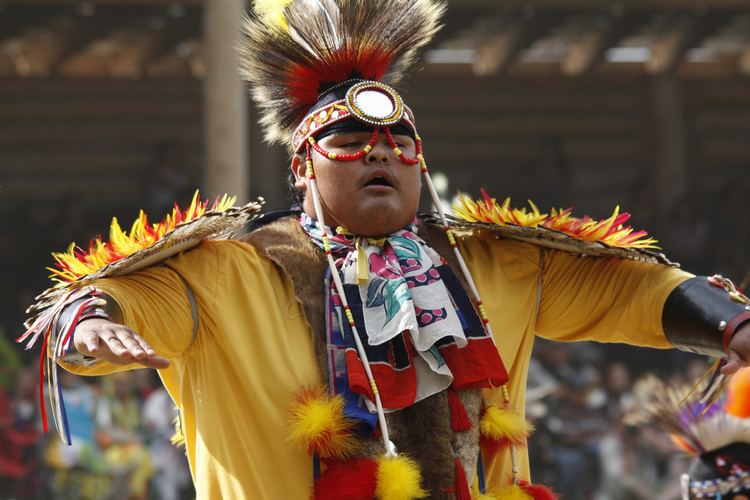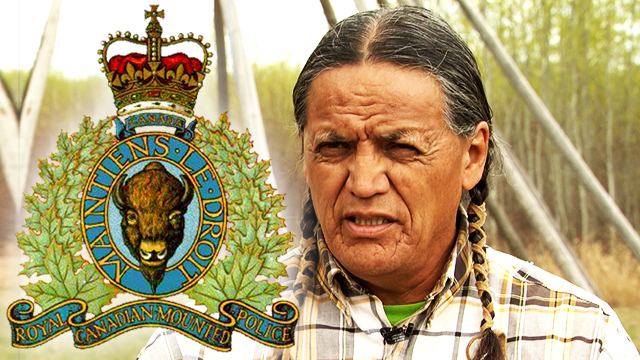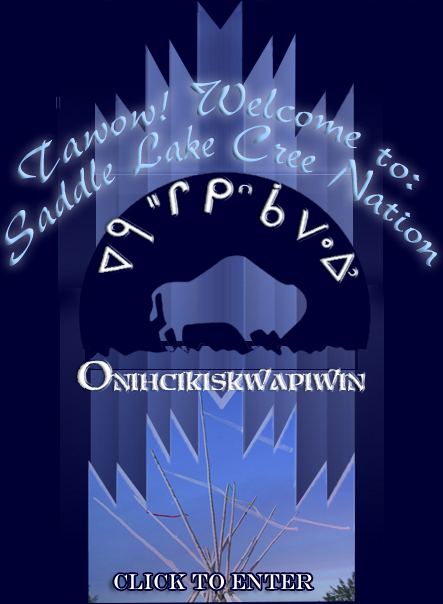 | ||
Saddle Lake Cree Nation is an Amiskwacīwiyiniwak ("Beaver Hills Cree") division of the Plains Cree, historically speaking the Plains Cree language and located in central Alberta. The Nation is a signatory to Treaty 6. This First Nation's governing structure is unusual in that it has two separate councils and chiefs governing different Indian reserves, one called the Saddle Lake Cree Nation (proper) and the other called the Whitefish Lake First Nation, often called "Whitefish (Goodfish) Lake First Nation" to distinguish it from a similarly named group in Manitoba. For the purposes of the Indian Act however the Saddle Lake and Whitefish are one band government.
Contents
- Shannen s dream saddle lake cree nation shows support
- History
- Reserves
- Governance
- Saddle Lake Cree Nation
- Whitefish Lake First Nation
- References

In June 2013, the Nation reported a population of 9,934 people, of which 6,148 people lived on their own Reserve. Their reported population size makes Saddle Lake the second most populous First Nation in Alberta (after the Kainai Nation a.k.a. the Blood people). Of these 2,378 were members of the Whitefish Lake First Nation, with 1,778 of those lviving on-reserve, and remainder are members of the Saddle Lake Cree Nation proper.

Shannen s dream saddle lake cree nation shows support
History

In 1876, the Amiskwacīwiyiniwak, who were a loose confederation of Cree and Assiniboine band societies (part of the wider Iron Confederation), entered into a treaty relationship with Canada through Treaty 6. Chief Onchaminahos ("Little Hunter") for the Saddle Lake Band of Cree, and Chief Pakân ("Nut") for Whitefish Lake Band of Cree represented the ancestors of the Saddle Lake Cree Nation at negotiations and signing Fort Pitt (now in Saskatchewan). Chief Pakan, along with Big Bear argued for one large reserve of 1,000 square miles (2,600 km2) for all the Plains and Woods Cree in the West, so they could hunt and farm together. When the government did not agree to this, Pakan's and Big Bear's bands refused to settle on reserves until better term were offered, and Pakan when to Regina with the Métis translator Peter Erasmus in 1884 to discuss the matter with the Indian commissioner.

In 1902, four historical Cree bands were amalgamated as the Saddle Lake Cree Nation. The four Cree Bands were:

However, the amalgamation process wasn't fully completed until 1953 when the treaty pay lists of the Little Hunter's, James Seenum's and Blue Quill's Bands were merged.
Reserves
There are three reserves under the governance of the Saddle Lake Cree Nation, one of which is shared with five other bands:
Originally, Chief Muskegwatic had also reserved Washatanow (or Hollow Hill Creek) Indian Reserve 126 along the north bank of the North Saskatchewan River. However, this Reserve was surrendered in 1896 in exchange for an equal area of land adjoining Saddle Lake Indian Reserve 125, known today as the "Cache Lake Addition" of the Saddle Lake Indian Reserve 125. Blue Quill Indian Reserve 127 was originally reserved for the use by the Blue Quill's Band, but in 1896, a boarding school (Sacred Heart Indian Residential School, commonly called the "Saddle Lake Boarding School") was relocated from Lac la Biche, Alberta, to the Blue Quill Indian Reserve, and the Band relocated to the Saddle Lake Indian Reserve. In 1931, Blue Quill Indian Reserve 127 became a shared Reserve when the boarding school relocated to St. Paul, Alberta.
Saddle Lake Indian Reserve 125 is bordered by Smoky Lake County, the County of St. Paul No. 19, and County of Two Hills No. 21.
Governance
Saddle Lake Cree Nation elect their officials through a Custom Electoral System. Additionally, this Cree Nation maintains two groups of elected officials:
Saddle Lake Cree Nation
Saddle Lake Cree Nation on the Saddle Lake Indian Reserve have elected Chief Leonard Jackson, and Councillors Herb Cardinal, Terry Cardinal, Charlene Houle-White, Shannon Houle, John Large, John Shirt, Dennis Steinhauer, and G. Jason Whiskeyjack. Their three-year term began on 06/19/2013.
Whitefish Lake First Nation
Saddle Lake Cree Nation on the White Fish Lake Indian Reserve, governing the Reserve as the Whitefish Lake First Nation, also have elected officials. The Whitefish Lake First Nation have elected Chief James Jackson, and Councillors Leslie Cardinal, Brian Favel and Sandy Jackson. Their three-year term began on 11/27/2011.
